Table Of Contents
- Evolution of Heavy Construction Equipment
- Current Trends: Redefining the Construction Activities
- Maintenance and Service Considerations: Challenge for the Market
- Leading Manufacturers and Their Innovations
- What Does the Future Hold for Heavy Construction Equipment?
- Foreseeing the Future: Sustainable & Smart Heavy Construction Equipment Dominating the World

Sonia Mutreja

Shivangi Jain
Heavy Construction Equipment: A Constructive Journey from Past to Future

Heavy construction equipment are heavy-duty machinery & vehicles used across various sectors to execute large-scale construction activities, including earthmoving, excavation, material handling, and transportation. Heavy construction equipment encompasses a wide range of machinery such as excavators, bulldozers, loaders, cranes, dump trucks, and compactors. These equipment find applications in diverse construction projects, such as building construction, road & highway construction, mining, forestry, and demolition.
Evolution of Heavy Construction Equipment
The heavy construction equipment market has witnessed tremendous advancements over the past five decades, reshaping the industry and significantly boosting productivity, safety, & efficiency. The journey of construction equipment reflects broad technological and industrial transformations. In the 1970s, heavy construction equipment began to transition from basic machines to sophisticated motorized equipment. This era marked the widespread adoption of hydraulic power motor and engine, fueled by revolutionized machinery operations. Key innovations in this era included hydraulic excavators, loaders, and cranes, which offered greater flexibility & efficiency as compared to their mechanical predecessors.
The 1980s witnessed the introduction of computer technology into construction equipment, laying the groundwork for automated systems. Integrated circuits (ICs) were deployed into machinery, allowing for better control and monitoring of operations. In addition, the emergence of Computer-aided Design (CAD) software improved the operations of heavy construction equipment. In the 90’s, heavy construction equipment manufacturers began to design equipment with features such as enclosed cabs with climate control, improved visibility, and advanced safety systems. Furthermore, the integration of GPS technology surged during this time.
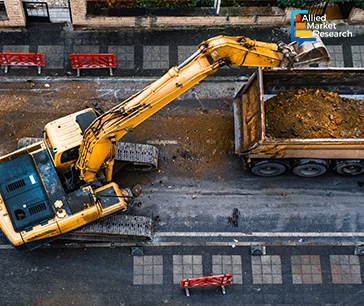
Currently, the heavy construction equipment market is dominated by several innovative technologies such as telematics, smart sensors for enhanced safety, electric engines, and automated accessories. Moreover, the future of the industry is predicted to be ruled by AI, the Internet of Things (IoT), and predictive analytics.
Current Trends: Redefining the Construction Activities
Technological advancements and environmental considerations have led to changes in internal & external accessories of heavy construction equipment. The manufacturers now significantly focus on deploying advanced safety features into the equipment, including proximity sensors, around-view & rearview monitor camera systems, and blind spot monitors. These features allow the equipment operator to detect potential threats which are not usually visible from the seat, thereby reducing the threat of accidents.
To cater to the high demand for heavy construction equipment, several manufacturers are utilizing 3D printing technology in their production lines, which speeds up the manufacturing process of equipment and reduces the burden on supply chain of the parts. Moreover, the technology is helping to lower waste generation & reduce expenses and is allowing manufacturers to test new materials for equipment production. Currently, the major domains where 3D printing is finding applicability are prototyping, testing, and performance validation. Moreover, the technology is rapidly extending its horizons in diverse aspects of heavy construction equipment manufacturing, including tooling, creation of on-demand spare products, and production of end-use products such as bellows or mounting brackets.
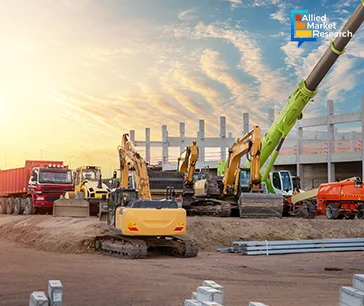
Environmental considerations are at the forefront of driving innovations in the heavy construction equipment market. The industry players strive to develop equipment which releases minimal to zero emissions and performs as robustly as the conventional machinery. Electric engines have been efficiently integrated into compact equipment such as mini excavators and are swiftly being deployed into large machinery. Apart from reducing emissions, the manufacturers are working to extend the life span and increase energy efficiency of the equipment, to align with sustainability goals.
The integration of telematics systems for real-time monitoring is gaining pace in the industry as the system enables predictive maintenance of the equipment and reduces the downtime of operation. The system provides real-time data of the equipment, from fuel consumption to maintenance requirements, thereby preventing costly breakdowns. Moreover, telematics enables the prediction of average time which will be required for the completion of tasks being performed by the equipment, allowing to align and accomplish construction projects fast & effectively.
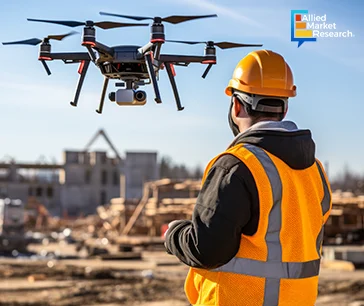
Construction Drones: Extension of Heavy Construction Equipment
Rise in the construction of skyscrapers has boosted the demand for aerial assistance during construction. Therefore, drones have been a natural fit for industry as they aid heavy construction equipment in delivering centimeter-level precision. The usage of robotics and automation in construction equipment via drones intends to elevate safety at construction sites and streamline construction activities through efficient usage of data. The high-resolution camera and sensors with LiDAR technology present in the drone enable it to conduct detailed surveys of construction sites. Moreover, drones communicate with heavy construction equipment such as excavators & bulldozers and monitor their operations through real-time information and pre-programmed software.
Drones for construction industry is still a new concept; however, the benefits that these equipment offer are projected to make them an indispensable part of the construction activities. Drones speed up construction projects with enhanced efficiency, while minimizing the downtime of equipment by offering real-time insights. The precision mapping capability of sensors installed into the drones minimizes errors, helps to make the optimal use of materials, and lowers the construction expenses.
Maintenance and Service Considerations: Challenge for the Market
While new technologies have eased construction activities and enhanced the safety of heavy construction equipment, these technologies are highly susceptible to damage and wear & tear with lack of maintenance. The high maintenance requirements of the technical advancements pose a critical challenge for the equipment owners & operators. Effective maintenance and timely service are essential for ensuring reliable performance, longevity, and safety of heavy construction equipment. From routine inspections & preventive maintenance to on-time repairs & component replacements, a proactive approach to equipment maintenance is critical for minimizing downtime, optimizing productivity, and reducing operational costs.
Although integration of telematics is gaining pace in the market, the vast amount of data provided by the technology is expected to overwhelm the operator as well as lead to system fatigue. To overcome this, thorough training regarding the management and analysis of data is essential for the operators handling the equipment. In addition, development of user-friendly and automated interface is pivotal to prevent system fatigue and reduce the cognitive overload.
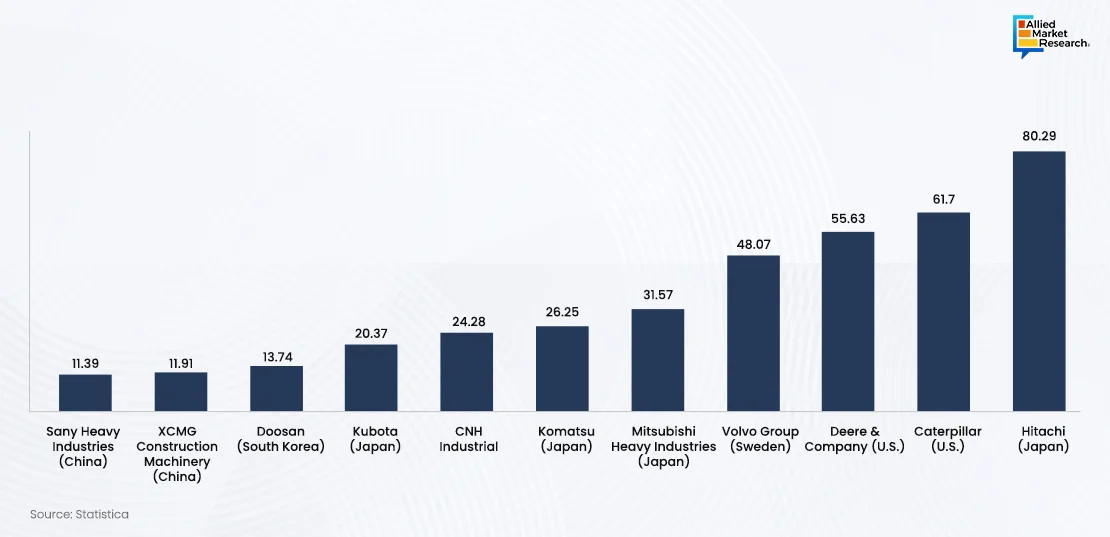
Leading Manufacturers and Their Innovations
According to a survey report released by Statistica — a global data and business intelligence platform; Hitachi, Caterpillar, and Deere & Company were the top three manufacturers of heavy construction equipment in 2023 based on their sales revenue.
The top manufacturers in the heavy construction equipment market around the globe have showcased their efforts of embracing new technologies by launching products with progressive features. In March 2024, Volvo launched EC500 excavator which features improved operator interface and cabin design. It is equipped with Volvo Smart View with Obstacle Detection, which offers operators an enhanced real-time view of their surroundings. The equipment finds applications in building & construction projects, road construction, utilities, and quarrying & aggregates to agriculture & landscaping. During the same period, the company launched L25 Electric compact wheel loader and ECR25 Electric compact excavator at the Japan CSPI-Expo. These products are a combination of the attributes of Volvo compact wheel loader platform and the efficiency of electric battery, thus delivering performance with zero emissions & low volume levels.
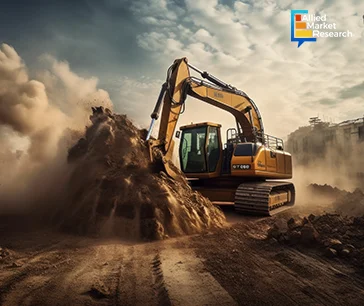
In April 2023, Hitachi launched excavator models ZX135US-7, ZX245USLC-7, and ZX345USLC-7. These excavators have a 19-foot 7-inch maximum dig depth and a bucket breakout force of 23,380 pounds. They use the HIOS IV hydraulic technology designed for a responsive boom, arm, and bucket, and are powered by a 100-horsepower Isuzu engine.
What Does the Future Hold for Heavy Construction Equipment?
The heavy construction equipment has evolved substantially over the time. However, the shift of machinery toward smart technologies is still a long way to go. The adoption of AI and IoT innovations is still at an early stage in the industry. These technologies are projected to augment the working of equipment by enabling smart decision-making and reducing work times. Furthermore, through the assimilation of IoT, the connectivity of machinery will enhance, thus facilitating the path for remote monitoring of equipment. The stakeholders are investing immensely in IoT technology to explore and develop novel equipment or accessories which extend the offering of the equipment.
Moreover, the efforts being made to overcome the limitations in telematics technology indicate that the technology will remain a niche feature of modern heavy construction equipment in the future. The data presented by telematics system will be critical for optimization of equipment inventory, resource allocation, and profitability of businesses.
Foreseeing the Future: Sustainable & Smart Heavy Construction Equipment Dominating the World
Newly developed heavy construction equipment with smart technologies has vast potential to revolutionize various end-use industries. By addressing challenges, embracing innovation, and fostering responsible use, novel technologies can be harnessed to create a safe, efficient, and sustainable future for heavy construction equipment.
For further insights, get in touch with AMR analysts.

